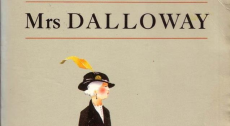
Email: reecejordan98@hotmail.co.uk
Total Article : 168
About Me:18-year-old sixth form student, studying English Literature, History and Government and Politics. My articles will broadly cover topics from the current affairs of politics to reviews of books and albums, as well as adding my own creative pieces, whether it be short fiction or general opinion.

This new interiority revolves around Woolf’s style of narrative in the novel. Chambers describes it as a ‘fluidity of atmosphere’: her narrative is one of a floating focaliser, which primarily follows Clarissa but will at times meander its way throughout London, providing focus on each character’s consciousness as it passes them. This intimate method of narrative takes ‘the doors off their hinges,’ as it were, and this allows Woolf to examine the differences between the consciousness of the sane and the insane. As aforementioned, Woolf has stated that Septimus acts as a double for Clarissa. Whilst one is deemed socially insane and the other sane, we see striking parallels in their way of thinking. Through Woolf’s free indirect discourse, we see in Clarissa’s consciousness that she feels ‘odd affinities with people she had never spoken to… even trees.’ This finds its distinct correlation in the mind of Septimus, who felt ‘the leaves being connected by millions of fibres with his own body.’ The only distinction we may draw from each statement is the exactitude of the latter – what is an ‘odd affinity’ for Clarissa is a bodily feeling for Septimus. By having such parallels between Clarissa and Septimus, Woolf illustrates the subtle boundary between sanity and insanity. Woolf herself suffered herself with mental illness, some of which informed the construction of Septimus’ consciousness, such as birds singing in Greek. Thus, one can imagine the frustration of figures such as Bradshaw in Woolf’s life who deemed people insane as not having ‘proportion’ and that rest can be the only cure. Woolf’s intimate style of narrative thus forces the reader into previously unexplored states of consciousness to illustrate that the line between sanity and insanity is faint and in desperate need of proper investigation rather than the quasi-science provided by contemporary doctors. It makes Septimus’ decision to maintain the ‘privacy of the soul’ much clearer; his soul was still intact.
Beach has charged Woolf with the assertion that her ‘characters seldom seem to know what they want with any definiteness, nor want it with passion.’ Mrs. Dalloway is indeed a novel which has no stock figures and no clear-cut answers to questions it evokes. ‘It is possible,’ Jean Bennett states, ‘that the impression that she does not create clear or memorable characters is due to the fact that her portraits are of a different kind to which the reader of fiction is accustomed.’ Indeed, Woolf created a new type of fiction, one away from the simple functionality of allegory. The question of choosing comfort over intimacy does not have a glaring solution – both have inherent flaws, and Woolf’s novel is a perfect mimesis of this kind of reality.
Image Credits: clairestemen.com

0 Comment:
Be the first one to comment on this article.